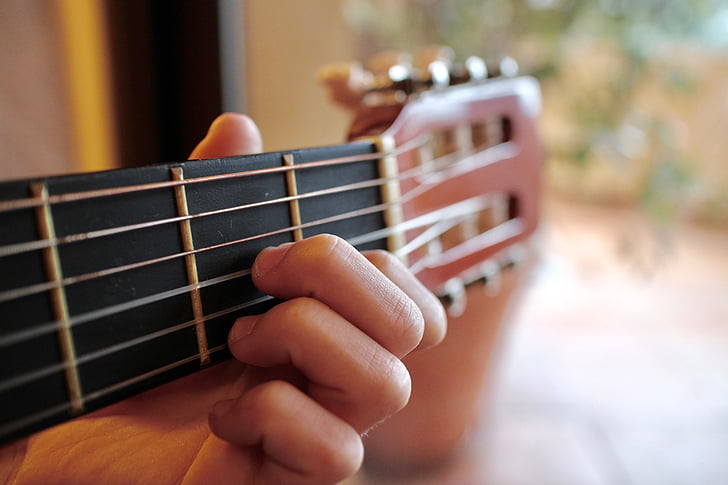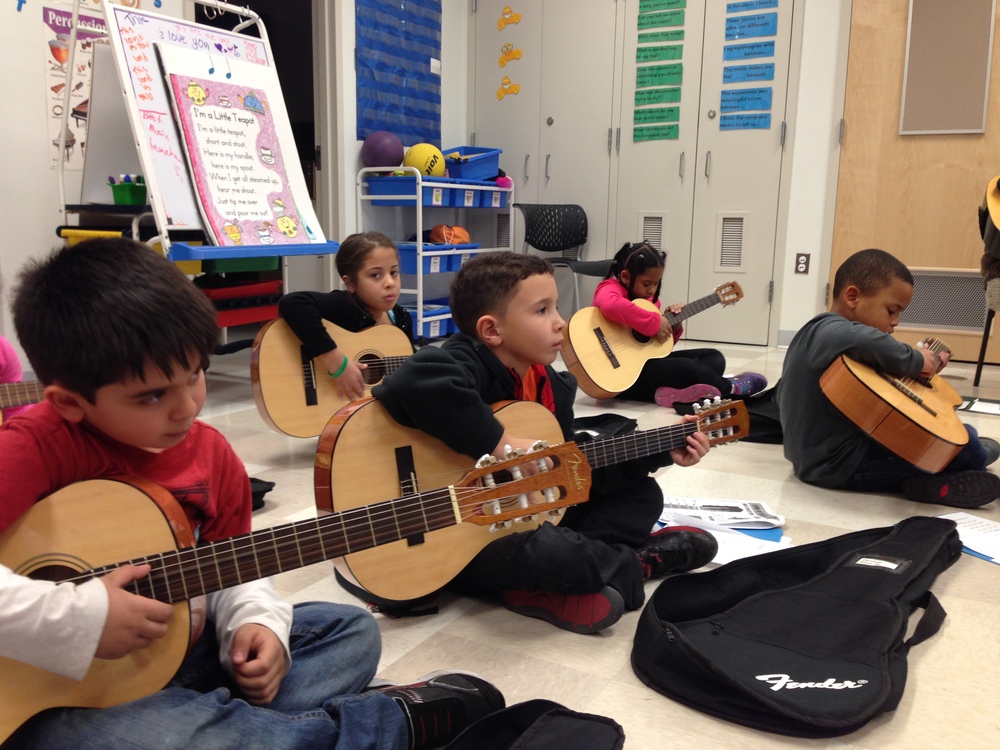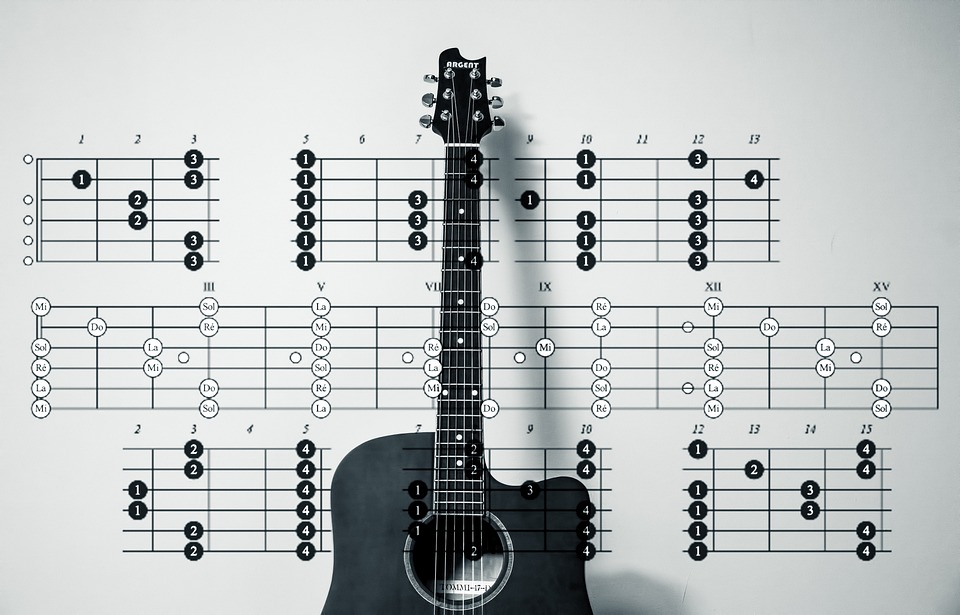We perceive guitar playing as a form of thoughtful escape, a way of building space between a person and his / her busy mind. Guitar playing aims to achieve more personal performance and well-being and mental health in many other ways as well. For instance, learning simple guitar chords for kids can be a fun and engaging way to introduce children to music and improve their cognitive skills.
Young children are more active in terms of memorization and therefore, learning guitar at an early age is a good idea.
Hence, as parents, it's your responsibility to ensure that they are appreciated and motivated while being in a productive period. The materials needed are not only for a one-stop-shopping effort but also for a simple, easy to pursue program which will acquire into a real and longtime mastery for weeks and months.
You should not only have to sacrifice the "playing" dimension if you're with a child to play the guitar properly instead of utilizing this device as a means of passage time.
Appropriately playing songs means being capable of moving effectively into music between a few (simple) chord forms. By being steady at first, each child must start moving between all the chords below and the music, so they have the information to make a lifelong satisfying, and self-esteeming skilled ability.
More so, this article will help you determine the information needed to enable you to assist your kid upon guitar lessons. Let’s get started!
Sometimes you’ll want to give up the guitar. You’ll hate the guitar. But if you stick with it, you’re gonna be rewarded. –Jimi Hendrix
Check out our No.1 recommendation for learning guitar here.
What is the Chord Progressions?
Whereas atoms are the 'matter of creation, the chord progressions are often the core components of all music.
Any song you listened can be simplified to a series of repetitive modifications to chord, defined as the chord progressions such as from Bach and Beethoven to Rihanna and Taylor Swift. While it is possible to mix chords in almost infinite variations, certain chord progressions occur in music all the time. For instance, learning simple guitar chords for kids can help them understand the basic building blocks of music and recognize these common progressions in their favorite songs.
What is an Open Position Guitar Chord?
An open-position guitar chord refers to whichever chord that comprises one or more strings that are not fingered. This is where the O's show open strings, while the X's tell you to stop such strings.
In the open position, A chord has two open strings which are embodied by the O’s on the A and high E-strings. However, the F chord is a fastened position because each note of the chord is being fingered, apart from the low-E and A strings that are not being played.
The Five Chords That A Child Should Learn First:

There are practically thousands of guitar chords that an instructor might use. However, it seems strange that nearly all guitar teachers will wind up choosing the same ones. A closer look at the scenario discloses that the chords in question are the great blend to make it easy to play and helpful to learn.
It is easy to play in a way that they do not create "unreasonable" requests on relatively inexperienced fingertips. Also, it helps them see the value of learning it. This enables the learners to perform satisfactory chord progressions in a few appropriate keys more particularly the G and A.
Hence, here are the chords that they need to learn:
1. E major Chord

The basic chord is the foundation of guitar playing, and learning how to play an E major chord is an excellent starting point.
A chord is classified as three or even more notes of various names to sound simultaneous. Even so, with all six open strings, you can't be playing some group of notes, but the notes have to shape musical arrangements. That involves learning chord features for a guitarist.
Follow the following steps to play the E major chord:
- On the third string, next fret, you must put the first finger or the index.
Try to keep the strings you have skipped over under no pressure.
- Put your finger second, on the fifth string, second fret.
You must skip the fourth string here. Make sure you don't touch the fourth string when you achieve it.
- Placed the third finger on the fourth chord, second fret.
You will need to curl your third and second finger in between the first second fingers, but you don't strain too hard to grasp your instrument.
- Place the three fretted strings tightly flat.
Ensure that your knuckles are curved. Neither of the fretted fingers being on open strings particularly the first and second strings that need to ring to support the E chord to sound lively and six-stringed.
- Stir all six strings in a clean and solid motion simultaneously, but don't strum too hard.
Three main ways you could even play chords: strumming, plucking, and smacking. Place your hand over the soundhole (if you perform sound) or on the pickups (if you perform electric), when you play the cords with your right hand.
2. Basic Em Guitar Chord (E Minor Chord)

Em is the first chord you're supposed to learn. It is not just because it is simpler but because it is used in several different songs mostly. It's one of the most fundamental guitar chords. The little m behind the E is small. Consider minor as a sound flavor.
3. Basic C Guitar Chord (C Major Chord)

We use three fingers and pluck the top five strings considering that it is the most common form of the C major chord.
This chord allows you to extend a little further with your third finger. Just ensure that you can finally get the third finger right behind the third fret.
One thing to remember is when you hit this chord, you also ought to arch your fingertips. Just use the very tip of your finger so that we don't mute the adjoining string to get dead, zippy audio.
4. D major Chord

The D major open chord is great for kids since it's found in hundreds — if not thousands — of popular songs, and it's pretty easy to learn.
If you know, the chord is a set of three or notes performed in at the same time. The D major chord is formed from the root, the third, and the fifth of the D major chord.
The D major chord includes the notes D (root), F # (third), and A (fifth).
5. G major Chord

Major chords are created from the first, third, and fifth degrees of any major chord. Thus, the G Major Chord contains the notes G (root), B (third), and D (fifth).

Guitar lessons can help your child improve their skills to concentrate as they have to work on a single job for a long time. Developing such a discipline would also allow them to concentrate their energies on certain subject areas.
Guitar practice has also been shown to improve coordination between the hand and the eye. Children develop important motor skills, like participating in certain sports. Even if you practice guitar, the chance of an accident is greater.
By giving the child the chance to learn guitar along with the assistance and commitment of a great coach, you can help kids develop a sense of pride and increase confidence. It is widely believed to be better communicators and happier people for children who practice creativeness and self-expression, accompanied by playing Guitar.
Author bio:

Dr. Robin Alexander
Dr. Robin Alexander, an MD Pathologist and passionate guitarist, combines his love for music and science. As a guitar enthusiast, he shares valuable insights and tips on guitar playing here at Guitarmetrics, helping musicians enhance their skills and enjoy their musical journey.
Check out these other Blogs we recommend for Guitar lessons for kids.
1. nationalguitaracademy.com
2. guitarchalk.com
Finding Alternative Sources of Guitar Lessons for Kids Online











